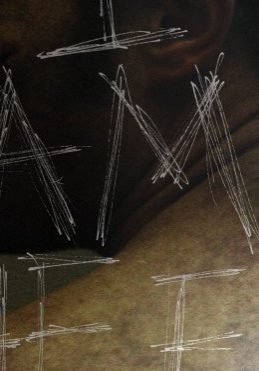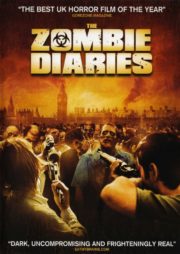Rooted in Horror
“Nobody wants to die like this.” This chilling line captures the essence of *Contracted: Phase II*, a 2015 film directed by Josh Forbes. The sequel to the original *Contracted* (2013), this film plunges deeper into the disturbing reality of body horror that is both grotesque and thought-provoking. The story follows a young man, Sam (played by Matt Mercer), who finds himself dealing with the terrifying consequences of a sexually transmitted disease that transforms its victims in horrifying ways. As he navigates through his conditions and personal relationships, the tension mounts, revealing the dark side of desire and the fragility of the human body.
Crafting a Disturbing Atmosphere
The horror atmosphere in *Contracted: Phase II* is primarily cultivated through a powerful sense of foreboding and unsettling visuals. From the outset, tension permeates the air as the viewer is introduced to Sam’s physical deterioration, which becomes central to the horror experience. The film evokes an entrenched anxiety that comes not solely from the body horror itself but from the ever-looming threat of contagion—a fear that becomes palpable as Sam’s condition worsens.
Suspenseful moments punctuated by grotesque imagery create an experience that is both shocking and disheartening, where the horror is not confined to quick scares but rooted deeply in the ongoing transformation of the protagonist. The gradual reveal of the disease’s effects traps the audience in an uneasy state, forcing them to witness not just a physical change but a psychological unraveling, echoing the emotional dread that accompanies the fear of losing one’s humanity.
Visual Storytelling
Director Josh Forbes uses effective cinematography to create a uniquely haunting visual style. The lighting palette often leans towards stark contrasts, amplifying the grotesquerie of the unfolding events. Muted colors dominate the scenes, emphasizing the sickly aura that surrounds Sam’s deterioration. Close-up camera angles are particularly effective in making the viewer acutely aware of Sam’s suffering and despair, eliciting empathy even in moments of revulsion.
In specific sequences, the use of practical effects is a standout feature, showcasing the horrific changes in an authentic manner that digital effects often fail to capture. The combination of practical and special effects enhances the realism of Sam’s plight, forcing the audience to reckon with the visceral implications of his disease. This visual storytelling is not just about shock value; it plays a crucial role in guiding the viewer toward understanding the psychological conflict integral to the narrative.
The Sound of Terror
In *Contracted: Phase II*, the sound design effectively magnifies the horror elements. The unsettling soundtrack is minimal yet haunting, and its occasional jarring crescendos coincide with moments of shock, pushing the viewer further into discomfort. The absence of sound during critical scenes amplifies the tension, creating a chilling atmosphere where every sound becomes keenly felt.
The film’s use of echoing whispers and distant noises further intensifies the claustrophobic feel of Sam’s environment, as if the walls themselves are enshrouded in the malevolent presence of the disease. This masterful sound manipulation not only enhances the horror but also encapsulates the psychological weight Sam carries throughout the film, illustrating how isolation feeds into the fear of the unknown.
Performances Under Pressure
Matt Mercer delivers a commendable performance as Sam, perfectly embodying the character’s descent into horror with authentic emotion. His reactions are grounded, making his fear and desperation palpable. As he grapples with his monstrous transformation, Mercer’s ability to convey pain and vulnerability creates a deep connection with audiences.
Supporting performances, while not as fleshed out, help to illustrate the various ways others react to Sam’s condition—ranging from horror to disdain. These relationships enrich the narrative, emphasizing the impact of isolation that comes with horror, not only from within but also from society’s reaction to an “other” or a perceived threat.
Exploring the Horrors of the Human Condition
At its core, *Contracted: Phase II* embodies a blend of psychological, supernatural, and body horror, shining a light on the anxieties tied to bodily autonomy, sexuality, and the fears of disease. The film tackles heavy themes such as the consequences of reckless behavior, the stigma of illness, and the fragility of human existence. It challenges normative ideas about sexual health and personal responsibility, a reflection on society’s often judgmental stance towards those afflicted.
By embedding these discussions within a horror framework, the film poses significant questions about empathy, fear, and the nature of monstrosity. The horror experienced is reflective of real-world anxieties surrounding illness and identity, making it far more than just a grotesque spectacle.
Fear Factor: A Mixed Bag
*Contracted: Phase II* effectively employs psychological scares rather than relying solely on gore, though it does not shy away from showcasing graphic content. The film oscillates between moments of gripping suspense and scenes that are difficult to stomach, striking a balance that keeps the viewer on edge. The execution of the horror elements largely succeeds, though some may find certain sequences overly drawn out or reliant on familiar tropes.
Its effectiveness as a horror movie lies in its ability to provoke thought while also delivering visceral terror. While it may not achieve the same cult status as some of its contemporaries, its raw depiction of bodily horror merits a viewing for those interested in the subgenre.
Who Should Watch?
This film is best suited for dedicated horror aficionados who relish in the examination of deeper themes beneath the surface of visceral horror. Casual viewers who prefer lighter fare may find themselves unsettled by its graphic content and unrelenting atmosphere. Those who appreciate films that challenge conventional horror narratives and evoke a strong emotional response will likely find *Contracted: Phase II* rewarding.
Linking with the Genre
In comparison to notable works like *The Fly* or *Hereditary*, *Contracted: Phase II* occupies a niche that reflects the evolution of body horror in contemporary cinema. While it may lack the polished finesse of its classic predecessors, its raw portrayal of metamorphosis and the psychological impact of illness makes it compelling within the genre.
Final Thoughts
*Contracted: Phase II* stands as a unique exploration of horror that goes beyond surface-level shivers, engaging with deeply rooted societal fears alongside visceral imagery. It excels in creating a tense and eerie atmosphere with effectively used sound and visuals. Despite its graphic nature and sometimes protracted pacing, the film delivers a solid punch of horror that lingers with the audience long after viewing.
Ultimately, viewers should approach this film ready to engage with both its horror and its underlying themes. It serves as a stark reminder of the grotesquerie tied to the human condition and the inescapable realities of life and death. However, potential viewers should be warned that it contains graphic depictions of body horror and illness, which may be triggering for some.




